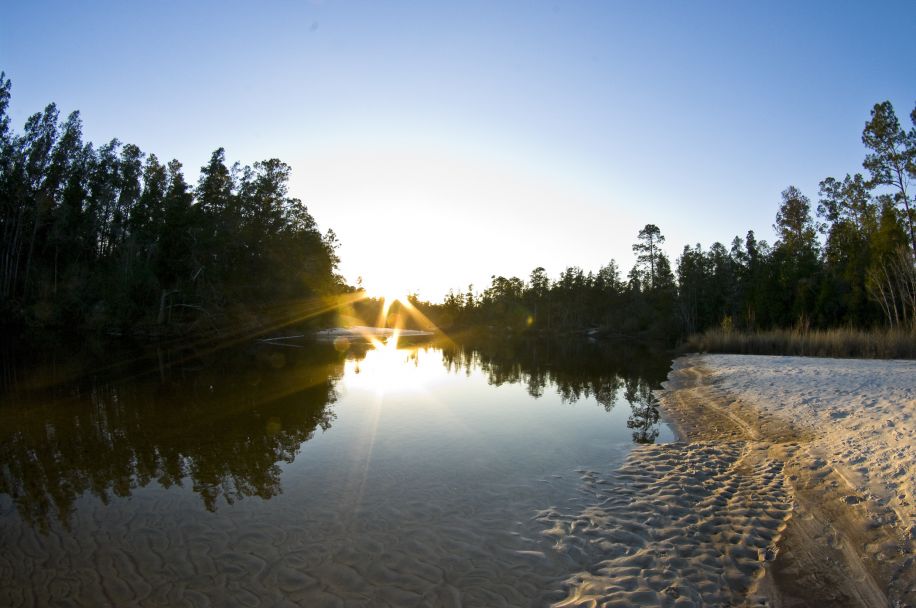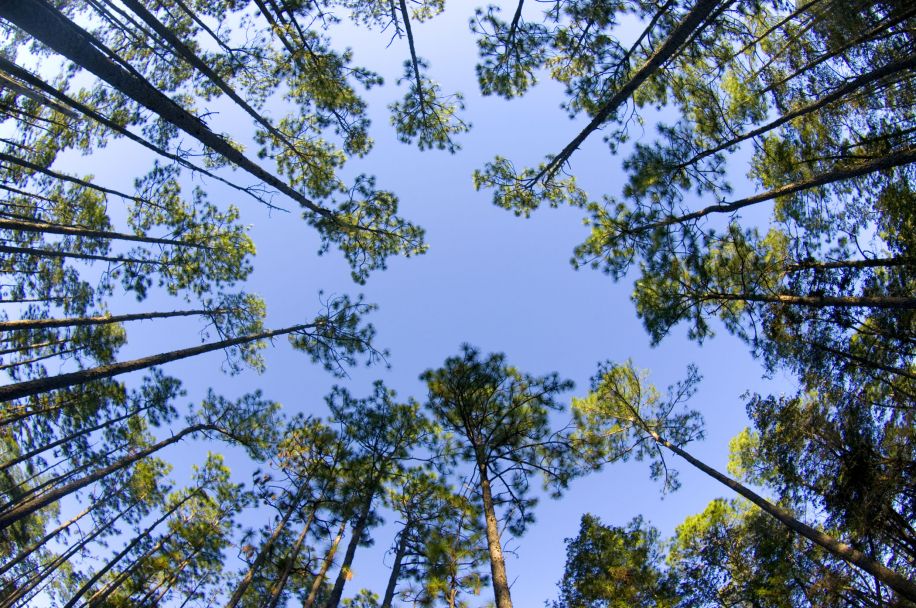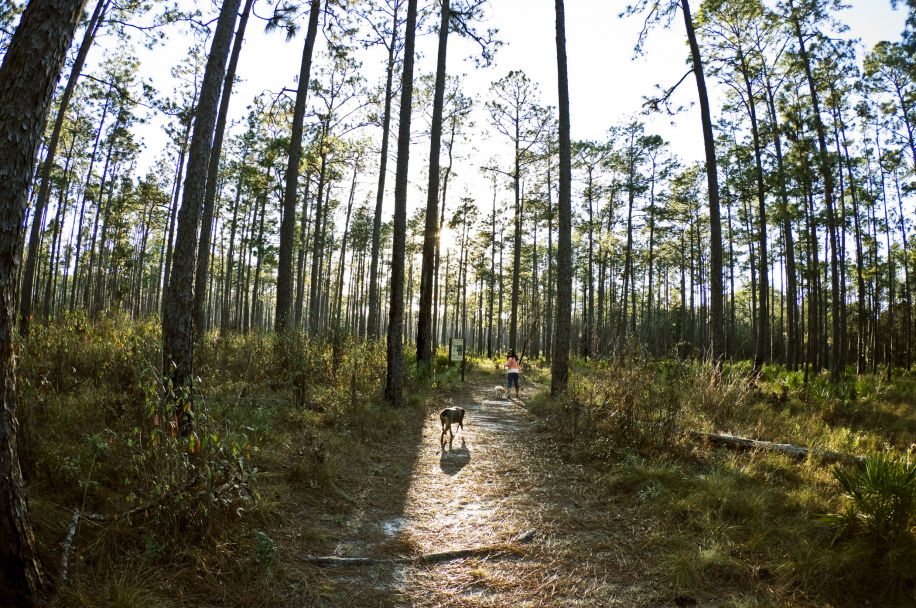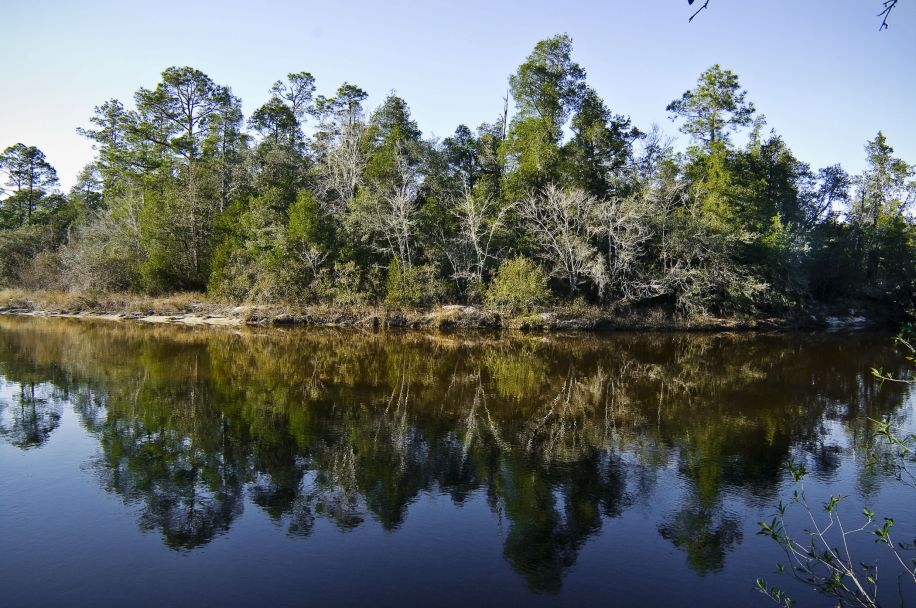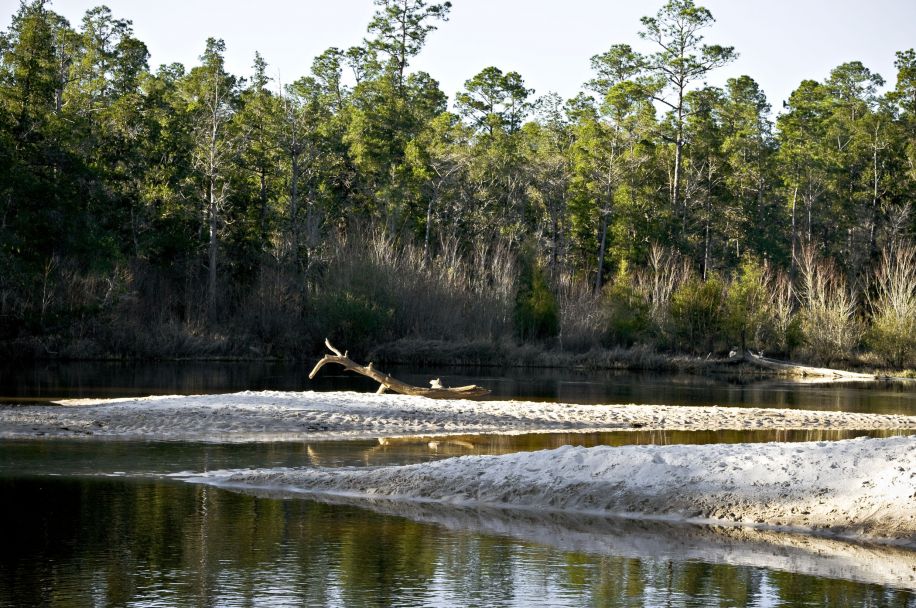When we think of water recreation here in the Florida Panhandle, we tend to think first of our emerald waters and white sand beaches along the Gulf of Mexico. Although our beaches are magnificent, we have other equally beautiful opportunities to enjoy nature in the form of our pristine river ways. Both the Blackwater River and the Perdido River are perfect examples of such alternatives. Providing an abundance of recreational activities like canoeing, kayaking, tubing, swimming, hiking and biking trails, camping and more, these rivers and their creeks and tributaries are also home to a wide variety of unique flora and wildlife. Pines, magnolias and cedars line the winding waterways providing beauty and shade for outdoor enthusiasts. Lucky guests just might catch a glimpse of a deer crossing the creek, a playful river otter or one of the many varieties of birds. Here, we offer a guide to these local gems and all the beauty, relaxation and recreation they offer.
BLACKWATER RIVER
When we think of water recreation here in the Florida Panhandle, we tend to think first of our emerald waters and white sand beaches along the Gulf of Mexico. Although our beaches are magnificent, we have other equally beautiful opportunities to enjoy nature in the form of our pristine river ways. Both the Blackwater River and the Perdido River are perfect examples of such alternatives. Providing an abundance of recreational activities like canoeing, kayaking, tubing, swimming, hiking and biking trails, camping and more, these rivers and their creeks and tributaries are also home to a wide variety of unique flora and wildlife. Pines, magnolias and cedars line the winding waterways providing beauty and shade for outdoor enthusiasts. Lucky guests just might catch a glimpse of a deer crossing the creek, a playful river otter or one of the many varieties of birds. Here, we offer a guide to these local gems and all the beauty, relaxation and recreation they offer.
History
According to a history of the river by William L. Peters and Jerome Jones, the radiocarbon dating of artifacts shows that human beings were “crudely shaping clay” in Northwest Florida 2,500 years ago, with five distinct cultures recognized in the area between 600 A.D. and 1650 A.D. including the Creek Indians who gave the river its name. The first foreign discovery of the Blackwater River is believed to have been in 1693 when Mexican scientist Don Carlos De Siguenza Y Gongora explored the area. In the early 1800s, the Blackwater River provided an important transportation artery for the burgeoning timber, lumber, brick, and shipbuilding industries. In the 1880s, those goods began to be shipped by rail instead of by river.
Natural Environment
Nature lovers will enjoy the unique topography of the Blackwater. Atlantic White Cedars line the river, one of which was designated a Florida Champion in 1982, a designation which highlights the largest of its species. Additionally, river travelers will see plenty of oak, maple, sycamore, magnolia, holly, tupelo, mountain laurel and azaleas in the forest along the river and its various streams. The Blackwater hosts aquatic plants as well. Keep an eye out for water fern, water lily, coontail, bladderwort and spatterdock. Of unique interest are the carnivorous plants such as parrot pitcher plants, white-top pitcher plants and sundews, which can also be found along the river and in the forest.
Wildlife enthusiasts will have plenty to see as well. White-tailed deer, turkeys and bobcats all call the forest home. River otters and alligators are rare, but are occasionally seen. For birders, a variety of birds can be seen along the banks and sandbars, including red-headed and pileated woodpeckers, hawks, crows, warblers, Mississippi kites, plovers and sandpipers, as well as many types of heron and egret. Portions of the Blackwater State Park and the Blackwater State Forest are part of the Great Florida Birding and Wildlife Trail. Fishing opportunities include freshwater fish like bass, bluegill and catfish.
Recreational Activities
A popular spot for canoeing, kayaking and tubing, 31 miles of the river, from Kennedy Bridge near Munson, FL to Deaton Bridge in the Blackwater River State Park are designated as part of the Florida Canoe Trail, which is part of a larger statewide system of greenways and trails. Public access points at Kennedy Bridge, Peadon Bridge, Cotton Bridge, Bryant Bridge, Johnson’s Float Launch and Deaton Bridge are popular for those with their own equipment. For others, a number of outfitters are available for kayak, canoe and tube rentals. Choose from a variety of day trips or find a sandbar, pop a tent and spend the night in this splendid wilderness.
PERDIDO RIVER
The Perdido River takes its name from the Spanish word for “lost” and was named by the Spaniards who occupied the area until 1813. Forming the border between Florida and Alabama, the Perdido’s roughly 65-mile windy path flows through woodlands of pine, cypress and juniper cedar. The river is narrow and offers a number of sandbars for picnics and swimming. The Perdido River has been designated an Outstanding Florida Water and Special Water system, a canoe trail, and a recreation area. The upper part of the river is a shifting sand river system, which is unique to portions of Northwest Florida, south Alabama, southern Mississippi and extreme eastern Louisiana, while the lower end of the river is a black water river with a deep, slow-moving channel and tea colored waters.
History
Spanish coins, guns, and other artifacts that have been discovered in the area suggest that Perdido Bay and Perdido River were used by smugglers avoiding Spanish custom duties in the Colonial period. Old bridge pilings from timber harvesting operations are still visible along the river as well.
Along the Perdido River, paddlers will see upland hardwood forest trees such as hickory, magnolia, sweetgum, dogwood, maple and redbud, as well as bottomland forest including water oak, maple, white cedar and laurel oak. Other trees and plants include titi, gallberry, willow, pitcher plants, sundew, cypress, tupelo, dahoon holly, and marsh fern.
Wildlife
The Perdido River and its banks are also teeming with a wide variety of wildlife including wood duck, wild turkey, barred owl, belted kingfisher, pileated woodpecker, red-eyed vireo, river turtles, white-tailed deer, beaver and river otter. For anglers, the river offers l argemouth bass, chain pickerel, bluegill, and longear sunfish.
Recreational Activities
The Perdido River is a favorite among outdoor enthusiasts. Its waters offer plenty of recreational opportunities including kayaking, canoeing, swimming and fishing. Public access points at Fillingim Landing, Pipes Landing and Sand Landing are great for those with equipment. Outfitters in the area will rent equipment as well.
